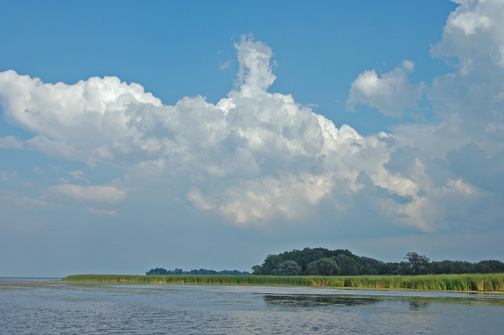Besides the mute or trumpeter swan inhabiting Braddock Bay, one of the few freshwater estuaries on the Great Lakes, there are migrating tundra or arctic swans which swoop down in large numbers in late winter, part of their yearly migration from the south to breeding grounds up north.Emptying into Braddock Bay,
Salmon and Buttonwood Creeks drain a huge portion of western Monroe County, as
far as the town of Sweden, releasing large amounts of sediment which restores
the marshes ringing the bay. Migrating Canada geese, turkey vultures,
songbirds, ducks, raptors [hawks] and swans are an essential part of a global
ecosystem increasingly threatened by lack of habitat and forage.
I photographed this
trumpeter swan family last summer and was struck by the parents' protectiveness
toward their cygnets. You can tell trumpeter from tundra by the orange on the
bill of the trumpeter. Tundra swans' bills are all black. If we disregarded,
chemically-killed or on other ways altered all the animal and plant 'invasive
species' we see, we would have a lot of bare spots everywhere. We humans are
also an invasive species as we know from our American history.
I would hope that we see how
genuinely fragile each species is and without invoking 'climate change' which
will alter weather and habitat, we make adjustments rather than launching
mechanical and chemical campaigns in our most important habitats.




